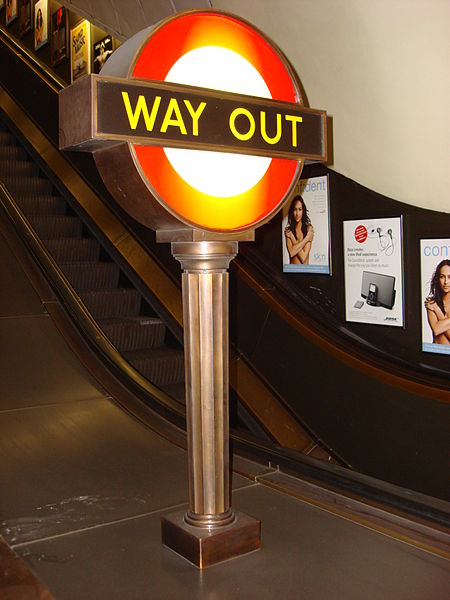 Rob Waller commented on his blog The Simpleton that the recorded message at King’s Cross Underground station has changed from ‘alight for the Royal National Institute for the Blind’ to ‘exit for the Royal National Institute of Blind People’.
Rob Waller commented on his blog The Simpleton that the recorded message at King’s Cross Underground station has changed from ‘alight for the Royal National Institute for the Blind’ to ‘exit for the Royal National Institute of Blind People’.Hang on a minute – there are no exits on the Underground. If you look at the signs, you will see that London Transport’s house style is ‘Way out’ (previously ‘WAY OUT’), chiming with long-standing advice to avoid Latinisms in favour of plain, English words. I've always liked this directness, although a quick trawl of the web produces several examples of visitors to London who feel obliged to explain that ‘way out’ means ‘exit’.
So, shouldn’t it be ‘way out for the Royal National Institute of Blind People’?
But here, I imagine, ‘exit’ is being used as an imperative rather than a noun: and you can’t say ‘get out for the Royal …’ because that sounds a bit like the bloke in the pub, ‘get out of here …’ ‘Exit’ works both an a noun and a verb, making it flexible in sentence structures – in the King’s Cross example, a verb is required to balance the first part of the announcement, which explains you can change for the Northern and Piccadilly lines, and for the main line station. So perhaps exits haven't finally come in to the tube after more than a century and a half – we’ll still have to find a way out when we want to exit.
The image shows a way out sign at St John’s Wood, 2007, by Oxyman